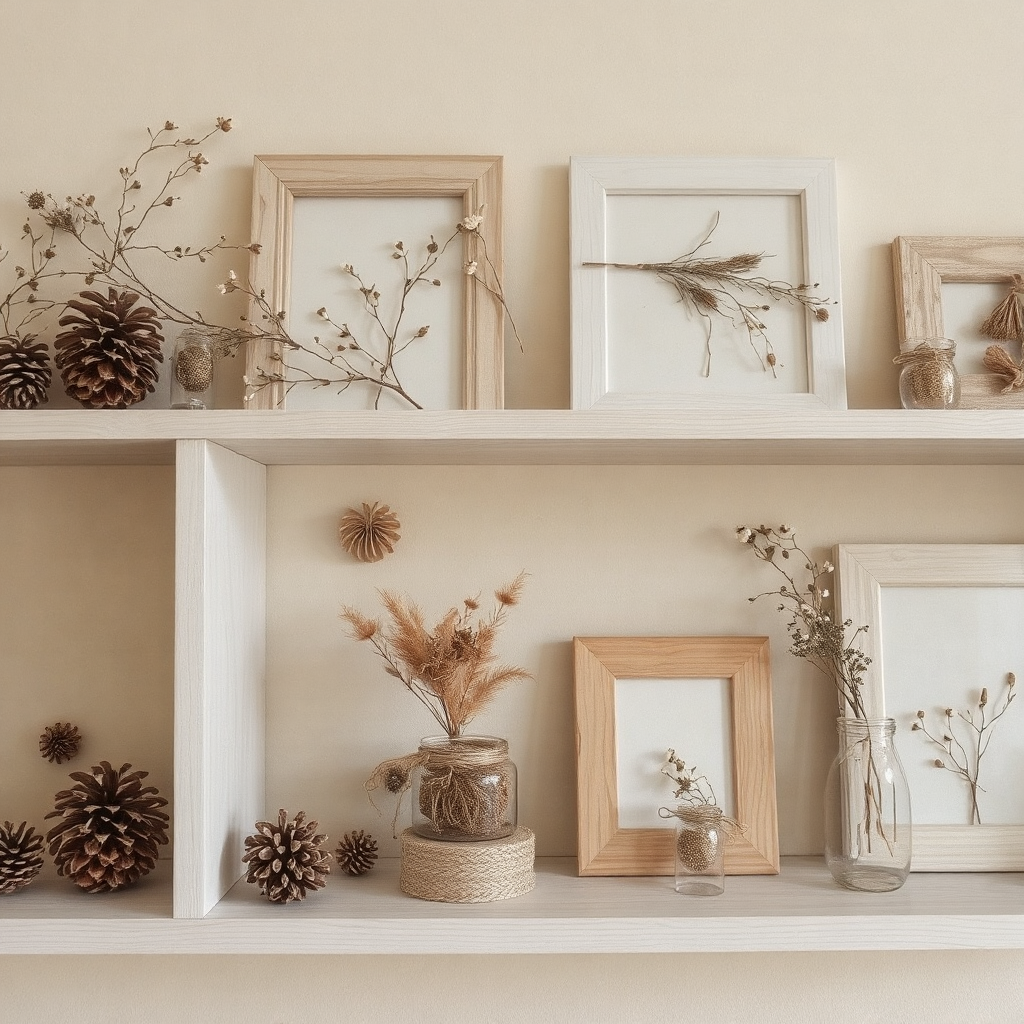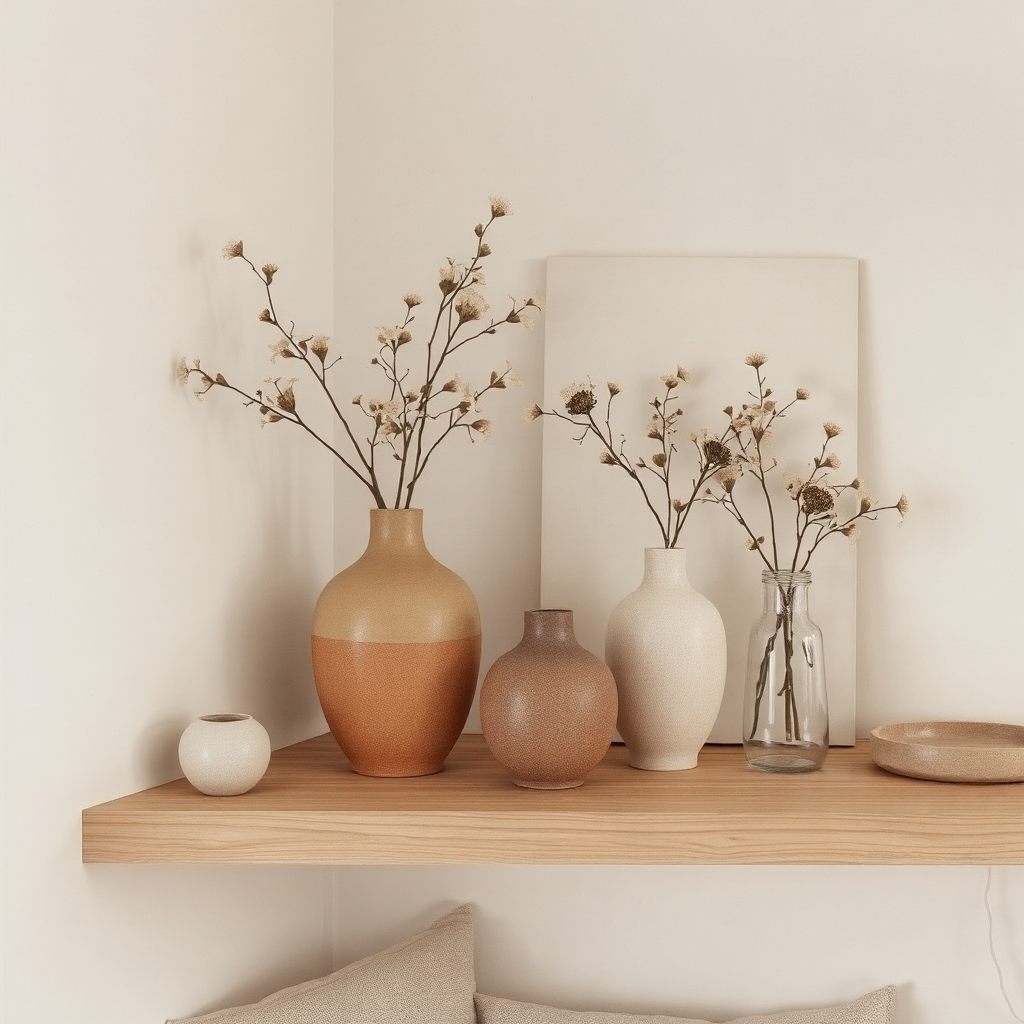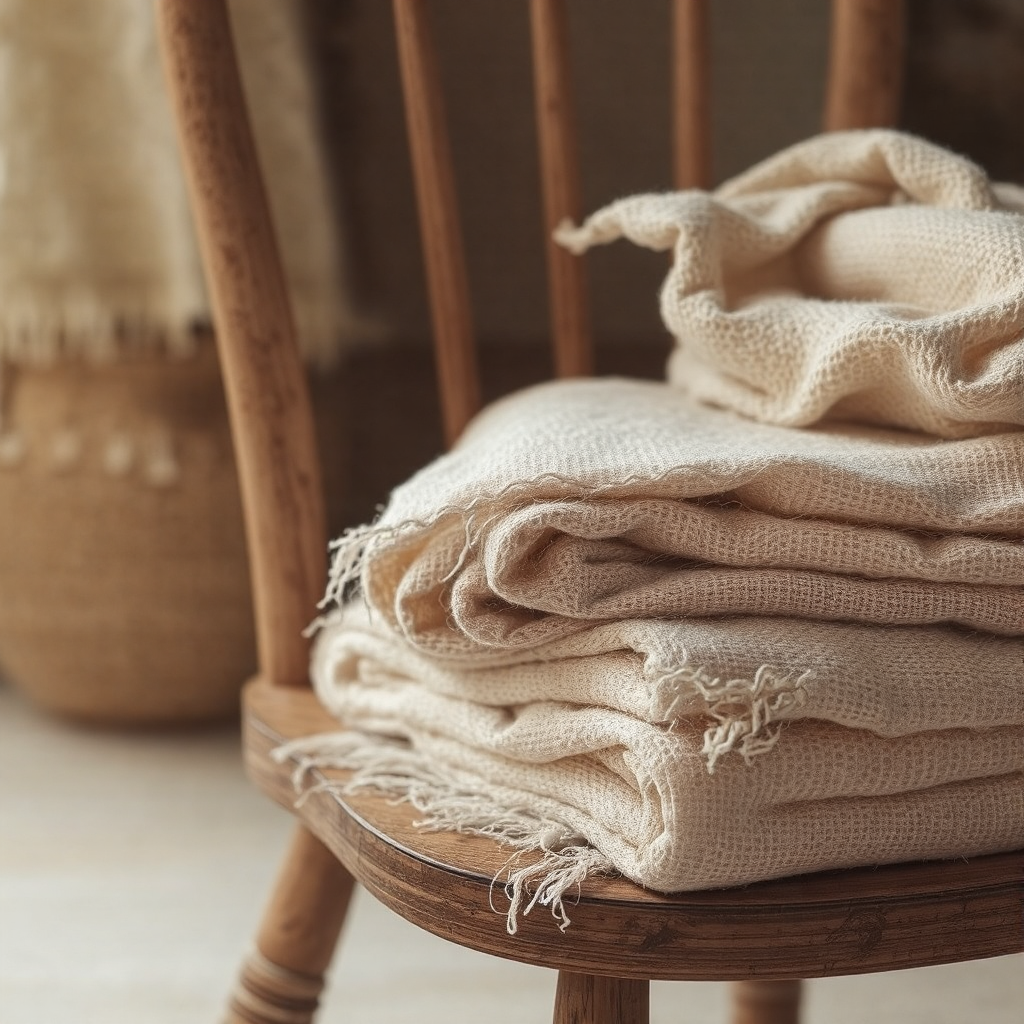Introduction to Nature-Inspired Design
Nature-inspired design is an interior decorating concept that emphasizes the integration of natural elements into living spaces. By incorporating materials, colors, and shapes derived from the outdoors, this design approach seeks to enhance the overall aesthetic appeal while promoting a sense of well-being. The significance of nature-inspired design extends beyond mere decoration; it fosters a connection between the indoors and the natural world, allowing individuals to experience the calming effects of nature even when they are inside their homes.
The essence of nature-inspired design is the use of organic materials, such as wood, stone, and natural fibers, which not only contribute to the visual warmth but also resonate with sustainable practices. Earthy palettes characterized by greens, browns, and blues reflect the colors found in nature and create a soothing ambiance. In addition to aesthetic benefits, research has shown that exposure to natural elements can lead to increased productivity and enhanced mood, making nature-inspired design not just visually appealing but also beneficial for mental health.
In this modern age, where urbanization often leads to a disconnection from nature, bringing elements of the outdoors into our living spaces can serve as a vital reminder of the beauty that surrounds us. The sensory experience of nature—through textures, scents, and colors—can be achingly missed in densely populated areas. Nature-inspired design captures this essence, offering a way to reintroduce the peacefulness of natural environments into daily life. By setting the stage for greenery, natural light, and organic materials, individuals can create a sanctuary that nurtures the spirit and elevates their home environment.
The Benefits of Bringing Nature Indoors
Incorporating natural elements into indoor spaces offers a myriad of psychological and physical benefits that can enhance one’s quality of life. Numerous studies indicate that exposure to nature can significantly improve mood and emotional well-being. Research published in the journal, Environmental Science & Technology, suggests that simply viewing images of nature can lead to decreased feelings of stress and anxiety. The soothing qualities of greens and natural textures can create a calming environment, which encourages better mental health.
Furthermore, bringing nature indoors has been linked to enhanced creativity and productivity. The presence of plants and natural materials can stimulate cognitive functions, resulting in improved problem-solving skills and innovative thinking. A study conducted by the University of Exeter found that employees working in environments enriched with greenery reported a 15% boost in creativity and productivity. These findings emphasize the importance of integrating nature-inspired accents into workspaces and homes alike.
Another compelling reason to consider nature-inspired decor is its role in reducing stress levels. According to a study by the Journal of Physiological Anthropology, individuals who engage with indoor plants or take time to immerse themselves in greenery exhibit lower levels of the stress hormone cortisol. This reduction in stress not only improves mental health but can also lead to physical benefits, such as lower blood pressure and heart rate.
In addition to psychological advantages, bringing nature indoors can enhance air quality, as many indoor plants filter harmful pollutants from the air. The NASA Clean Air Study highlighted specific plants known for their air-purifying capabilities, further supporting the argument for incorporating plants into our living spaces. By doing so, individuals can create a healthier home environment that promotes overall well-being.
Popular Nature-Inspired Accents and Elements
Incorporating nature-inspired accents into home decor not only enhances the aesthetic appeal but also fosters a calming atmosphere reminiscent of the outdoors. One of the most common elements is indoor plants. These green additions not only purify the air but also bring vibrancy and life to any space. Varieties such as succulents or ferns can be easily maintained while adding a fresh touch.
Another essential accent is natural wood furniture. Pieces crafted from materials like oak, walnut, or teak display the unique textures and grains of nature, connecting the interior with the natural environment. Wood furniture, such as dining tables or bookshelves, evokes warmth and comfort, making a room feel inviting and cozy.
Additionally, stone accents provide a rugged sophistication. Incorporating materials such as granite or marble, whether through countertops, tiles, or decorative objects, can evoke a sense of stability and permanence. These elements tie back to nature’s raw beauty while adding a touch of elegance to modern interiors.
Color palettes play a crucial role in creating a nature-inspired ambiance. Earthy tones, such as greens, browns, and muted blues, mimic the colors found in nature. These hues promote tranquility and relaxation, making them suitable for bedrooms and living spaces. Paintings or wall art featuring landscapes or natural scenes can further enhance the connection to the outdoors.
Lastly, fabrics with nature-inspired patterns, such as floral or botanical prints, can be integrated through cushions, drapes, or throws. These textiles convey a sense of freshness and invite the soothing essence of the outdoors into one’s home, creating a harmonious balance between interior and exterior environments.
Selecting the Right Plants for Your Space
Integrating indoor plants into your living space can enhance both the aesthetic appeal and the overall ambiance of your home. However, selecting the right plants requires careful consideration of various environmental factors such as light, humidity, and available space. Understanding these criteria is essential for ensuring the successful growth of indoor plants.
First and foremost, light conditions play a crucial role in plant selection. Different plants have varying light requirements, ranging from low light to bright, indirect sunlight. For example, if your space has limited natural light, consider opting for low-light houseplants like snake plants or pothos. Conversely, if you have an abundance of sunlight, succulents and flowering plants might thrive in such conditions. Assessing how much light each room receives at different times of the day can guide you in making informed decisions.
Humidity is another important factor to consider. Some plants flourish in humid environments, making them ideal for bathrooms or kitchens, while others prefer drier air. Tropical plants, such as ferns and peace lilies, benefit from higher humidity levels. If your space lacks humidity, misting these plants or using a humidifier can help maintain their health.
Space constraints also dictate plant selection. Larger plants, such as fiddle leaf figs, require ample room to grow, while smaller varieties, like succulents and cacti, can fit into tighter areas such as shelves and window sills. Assessing your available space will help you choose plants that not only suit your aesthetics but also thrive in their designated areas.
Once you have selected suitable plants, consider care and maintenance. Familiarizing yourself with watering schedules, soil requirements, and potential pests will ensure your indoor greenery remains vibrant and healthy. With the right choices and care, indoor plants can bring a refreshing touch of nature to your interiors.
Incorporating Textures and Materials from Nature
Incorporating textures and materials drawn from nature is an effective approach to create a serene and inviting atmosphere within any home. By utilizing natural fabrics and elements, one can evoke the calming presence of the outdoors indoors. Fabrics like cotton and linen are not only soft and breathable but also maintain a close association with the natural environment. Their textures add a layer of comfort and softness to living spaces, enhancing tactile experiences that resonate with the organic essence of nature.
In addition to soft textiles, rougher textures can provide balance and depth. Stone and wood are prime examples of materials that introduce an earthy element into interiors. Using reclaimed wood for furniture or accent walls introduces a unique story and a tangible connection to nature. Similarly, stone elements, whether as feature walls, countertops, or decorative pieces, add an unrefined elegance, making the space feel grounded and organic. The contrast between smooth textiles and rugged natural elements creates a harmonious interplay that is visually appealing.
Layering various materials is essential in achieving a cohesive look that mirrors the complexity of natural environments. For instance, combining a soft linen sofa adorned with cotton cushions alongside a raw wooden coffee table and a stone planter can establish a welcoming setting that is both stylish and comforting. Incorporating indoor plants further enhances this connection, as they add life and vibrancy to the overall design. By thoughtfully selecting and arranging these elements, homeowners can effectively bring the essence of nature into their living spaces, fostering an ambiance that is restful and rejuvenating.
Color Schemes Inspired by Nature
When designing an interior space, drawing inspiration from the natural world can result in captivating aesthetics. The colors found in various landscapes can evoke specific moods and enhance the overall environment of a room. By selecting color schemes inspired by forests, oceans, and deserts, homeowners can create a cohesive and tranquil atmosphere throughout their spaces.
Forest-inspired color palettes typically include rich greens, earthy browns, and subtle shades of cream. These colors can reflect the serene beauty of woodlands, promoting a sense of calm and grounding. For example, a deep forest green accent wall paired with light beige or off-white furniture creates a harmonious balance that mirrors the natural world. Accessories, such as green throw pillows or wooden decor items, can further integrate this theme into the living space.
On the other hand, oceanic color schemes often feature shades of blue, teal, and sandy tones. These colors capture the essence of coastal environments, instilling a feeling of freshness and tranquility. A pale blue wall with darker navy furniture can epitomize the beauty of a seaside retreat. Incorporating accessories that reflect these hues, such as ocean-themed art or linen in sandy beige, enhances the coastal vibe and ties the room together.
Desert-inspired palettes generally include warm tones like terracotta, soft yellows, and muted pinks. These colors can evoke the arid, sun-kissed beauty of desert landscapes, resulting in a warm and inviting atmosphere. A soft pink accent installation can beautifully contrast with terracotta vases or yellow cushions. When applying these color schemes, homeowners should consider both paint and accessories to ensure a cohesive look across different elements of the room.
Ultimately, utilizing nature-inspired color schemes allows for creativity in home design. By thoughtfully selecting hues reflective of the environment, one can achieve a peaceful yet stylish interior that celebrates our connection to the outdoors.
Creating a Nature-Inspired Focal Point
Designing a living space that reflects nature can significantly enhance the ambiance of a room. One effective method for achieving this is by creating a nature-inspired focal point. Such elements not only demonstrate an appreciation for the outdoors but also foster a sense of tranquility and connection within the home. A strategically placed focal point can draw attention and anchor the overall design, allowing for a harmonious arrangement of furnishings and decor.
Oversized plants, for instance, make for stunning focal points that naturally attract the eye. Species such as the Fiddle Leaf Fig or Monstera Deliciosa, known for their dramatic foliage, can fill a corner or stand prominently in a room. The lush green leaves serve as a vivid reminder of nature’s beauty, while also improving indoor air quality. When selecting plants, consider the lighting conditions of the space and choose varieties that thrive in your specific environment. Additionally, incorporating decorative pots or plant stands can enhance the aesthetic appeal, allowing the plant to contribute positively to the surrounding decor.
Another captivating option is nature-themed artwork, which can evoke a sense of calm and wonder. Opt for pieces that feature landscapes, botanical illustrations, or wildlife scenes, ensuring they reflect the natural world in an inviting way. The scale and placement of the artwork is crucial; large-scale works can serve as striking centerpieces, while smaller pieces can be arranged in a gallery wall for a more eclectic touch. Each artwork can narrate a story of the outdoors and encourage reflection, making it an integral part of the room’s character.
Lastly, consider incorporating a natural wood statement piece, such as a reclaimed wood coffee table or a decorative wall hanging. These items introduce textures and tones that mimic the outdoor environment, adding warmth and depth to the decor. When chosen thoughtfully, a natural wood element can tie together various design aspects, fostering a cohesive look. By selecting these focal points, you will successfully create a harmonious space that celebrates the beauty of nature.
DIY Nature-Inspired Decor Projects
Creating nature-inspired decor projects provides an opportunity to bring the beauty of the outdoors into your living space, promoting a sense of tranquility and connection to nature. Engaging in DIY activities not only fosters creativity but also yields unique pieces that showcase personal style. Whether you are a seasoned crafter or a beginner, several projects can suit every skill level, using materials sourced from your surroundings.
One popular project is crafting terrariums, which are miniature ecosystems that can thrive indoors. To start, gather a clear glass container, some pebbles for drainage, activated charcoal to keep the environment fresh, and potting soil. Choose small plants such as succulents or mosses that require minimal care. Layer the materials starting with pebbles, followed by charcoal, soil, and placing your plants. These self-maintaining gardens will add vibrant life to your decor and can be customized with decorative stones or figurines.
Another engaging project is creating natural wreaths. This involves collecting twigs, leaves, flowers, and even seasonal produce. A sturdy base can be made from vine or wire. Assemble your materials by weaving or attaching them to the base with twine or hot glue. Personalize your wreath according to seasons or celebrations, making it an excellent way to refresh your décor regularly.
Lastly, consider designing art pieces using elements gathered from nature. This can include pressed flowers, feathers, or stones. Arrange these findings on a canvas or within a frame to create a stunning visual display that showcases your artistic vision. The beauty of these projects lies in their ability to transform ordinary natural objects into cherished decor items that inspire and uplift.
Conclusion: Embracing Nature in Everyday Life
Incorporating nature-inspired accents into home decor offers a multitude of benefits that enhance not only the aesthetic appeal of a space but also the well-being of its inhabitants. Throughout this blog post, we have explored various ways to seamlessly integrate elements of the outdoors into our everyday environments. From utilizing natural materials such as wood and stone to incorporating plants and botanical motifs, each of these strategies serves to create a harmonious connection between our living spaces and the natural world.
Moreover, embracing nature-inspired designs can lead to a multitude of positive effects on our mental health, fostering a sense of tranquility and rejuvenation. The presence of natural elements is known to reduce stress, improve mood, and increase overall satisfaction within home environments. By thoughtfully choosing decor that reflects these principles, individuals can transform their spaces into sanctuaries that invigorate the mind and soothe the soul.
It is essential to remember that integrating nature into our lives does not require a complete overhaul of our existing decor. Simple changes, such as adding a single potted plant, choosing artwork that reflects outdoor landscapes, or using organic materials for furnishings, can significantly enhance the ambiance of a room. These small, intentional steps can collectively contribute to creating a more serene and fulfilling home atmosphere.
In conclusion, the notion of bringing the outside in through nature-inspired accents is more than just a design trend; it is a path toward achieving a balanced and harmonious lifestyle. By infusing our homes with elements from nature, we cultivate spaces that not only please the eye but also nourish our well-being. Embrace these concepts in your own home, and witness the transformative power of nature as it enriches your daily life.



